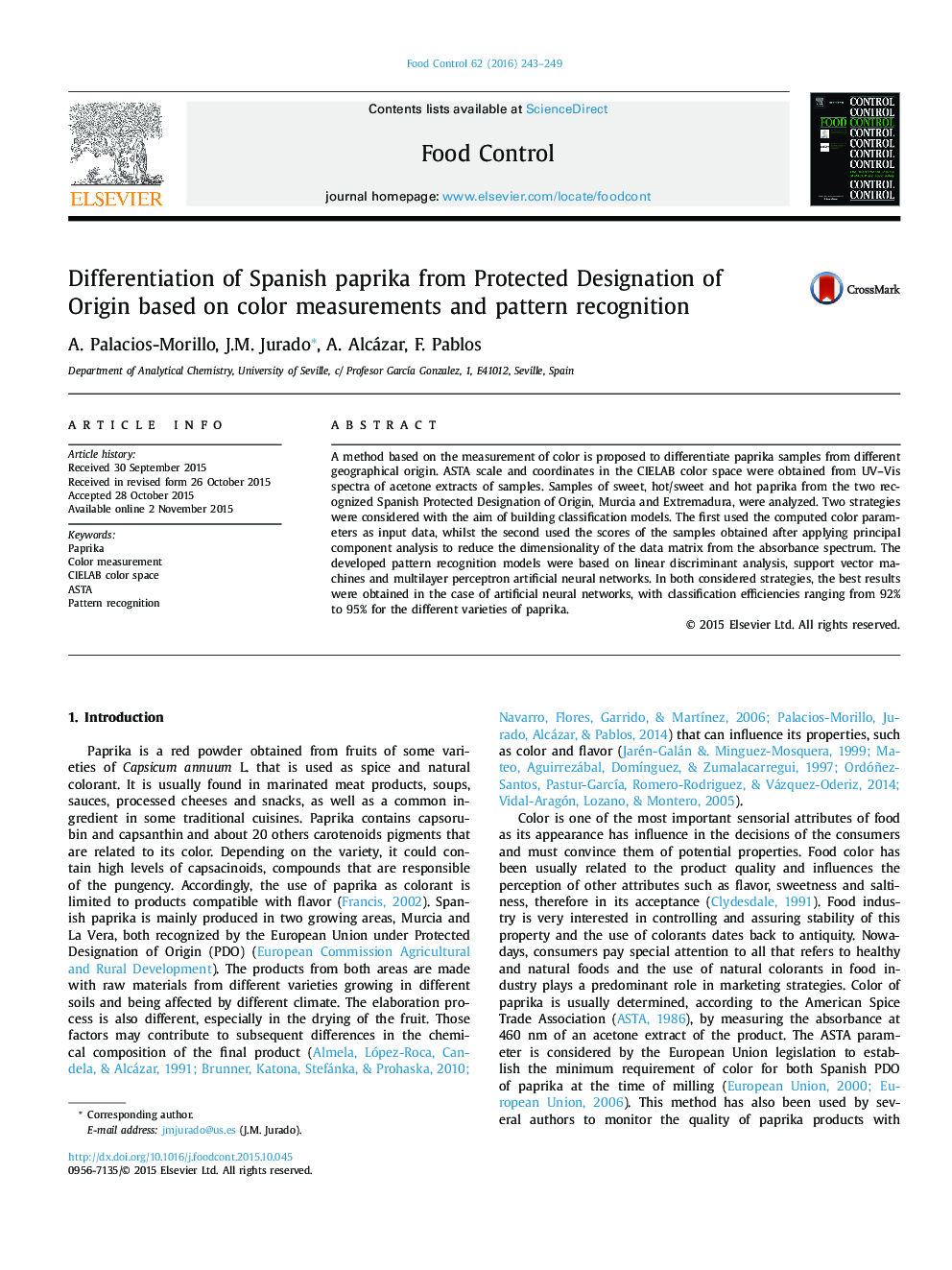| Article ID | Journal | Published Year | Pages | File Type |
|---|---|---|---|---|
| 6390446 | Food Control | 2016 | 7 Pages |
â¢Color parameters were used for geographical differentiation of Spanish paprika.â¢ASTA and CIELAB color parameters were computed from UV-Vis absorbance spectra.â¢Pattern recognition methods were used with classification purposes.â¢ANN models lead to best results with 92-95% of classification efficiency.
A method based on the measurement of color is proposed to differentiate paprika samples from different geographical origin. ASTA scale and coordinates in the CIELAB color space were obtained from UV-Vis spectra of acetone extracts of samples. Samples of sweet, hot/sweet and hot paprika from the two recognized Spanish Protected Designation of Origin, Murcia and Extremadura, were analyzed. Two strategies were considered with the aim of building classification models. The first used the computed color parameters as input data, whilst the second used the scores of the samples obtained after applying principal component analysis to reduce the dimensionality of the data matrix from the absorbance spectrum. The developed pattern recognition models were based on linear discriminant analysis, support vector machines and multilayer perceptron artificial neural networks. In both considered strategies, the best results were obtained in the case of artificial neural networks, with classification efficiencies ranging from 92% to 95% for the different varieties of paprika.
